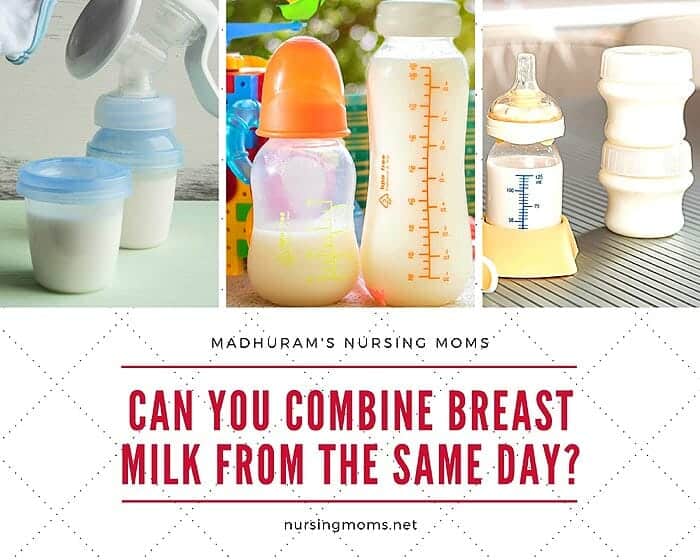
If you want to combine breastmilk[1] from two different pumping sessions, you will most likely wonder if this is safe to do, considering that you need to keep the quality of your breastmilk as good as possible.
There will be times when your baby won't eat the entire portion of breastmilk you prepared for them unless you are nursing them directly. If this is the case, you will have leftovers that you will not want to throw away. The good news is that you don't have to toss leftover breastmilk.
Jump to:
Can You Combine Breast Milk From The Same Day?
You can safely combine breastmilk from the same day and even from different days as long as you follow some simple aspects. Your primary focus is to not add contaminated breastmilk to fresh breastmilk.
![]()
How to combine breastmilk from the same day?
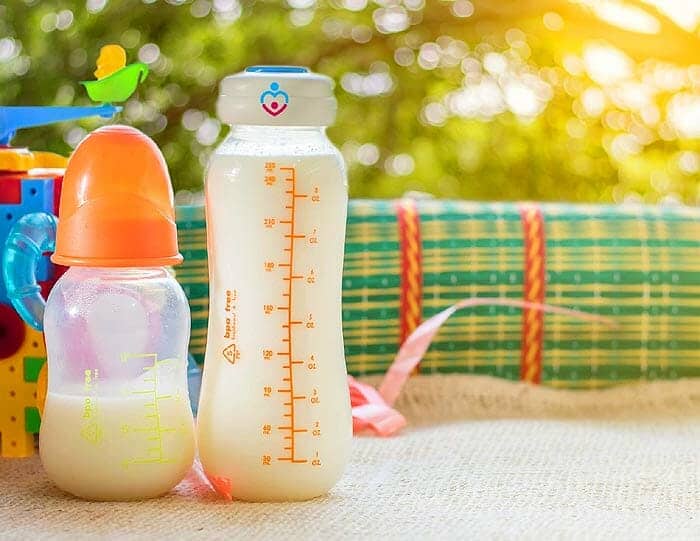
You might want to combine milk from different pumping[2] sessions in several ways. We will address all these situations in particular as you will have to make adjustments from one case to another.
A) Fresh breastmilk combined with room temperature breastmilk
One of the most common situations is when a mother will have to add fresh pumped or expressed breastmilk to breastmilk stored at room temperature.
- This can be done as long as you ensure that the room temperature milk was not stored this way for more than four hours.
- It can happen to have more pumping or expressing sessions within this four-hour time frame. If that is the case, you can keep adding fresh milk to the same container.
- An important aspect to keep in mind, in this case, is to consider the time you added the first amount of breast milk to the container you store at room temperature. All the milk in that container will be as old as the first batch of milk you added to it.
- Once the four hours window expires, you can decide to feed this breastmilk to your baby or store it furthermore in the fridge or freezer.
Suggested Reading:
![]()
B) Fresh breastmilk combined with refrigerated breastmilk
Fresh breastmilk can also be combined with refrigerated breastmilk. Still, you will have to pay attention to more aspects in this case.
- Freshly pumped breastmilk is warmer than refrigerated breastmilk, and you can't add breastmilk of different temperatures in the same container.
- A solution to this is to cool down your fresh breastmilk. You can do this by putting it in a different container in the fridge for 30 minutes or one hour. During this time, both breastmilk containers should have a similar temperature so you can combine them safely.
- After you have combined the two containers of refrigerated breastmilk, you can store it in the fridge for up to five days.
Suggested Reading:
![]()
C) Fresh breastmilk combined with defrosted breastmilk
Adding fresh breastmilk to a defrosted breastmilk also has its challenges, but it can still be done. You will have to take into account the temperatures of those two types of milk as well.
- Your warm fresh breastmilk, can't be added to a defrosted, cold breastmilk. Therefore, you will need to adjust the temperature to be similar to mix the two batches of breastmilk.
- You can adjust the temperature of these two batches of breastmilk by either allowing the defrosted breastmilk to warm up at room temperature or cooling the fresh milk down in the fridge.
- However, even if this is an option regarding combining fresh milk with an older batch, it is still recommended to give your baby the fresh milk first and only use the old one to complete their meal.
- Fresh breastmilk is the highest in terms of nutrients, and your baby will benefit more from it.
Suggested Reading:
![]()
D) Fresh breastmilk combined with frozen breastmilk
The general rule says you shouldn't add fresh breastmilk to frozen breastmilk as the warm milk will cause the frozen breastmilk to thaw out.
- If you still want to combine fresh breastmilk with frozen breastmilk, you will have to cool the freshly pumped breastmilk first. You can do that by placing the breastmilk in the fridge for 30 minutes to one hour.
- When your fresh breastmilk is cooled out, you can safely add it to the frozen breastmilk. Adding cold milk to frozen milk is called layering, and many mothers apply it.
- You can use this method if you tend to pump or express small quantities of milk at a time. Using the layering method is also a good option if you don't have enough space in your freezer, as you can store more breastmilk in fewer bottles.
Suggested Reading:
Another essential aspect when you add fresh breastmilk to frozen milk is to add a small quantity compared to the quantity of the frozen milk. So, if you have five ounces of frozen milk in a container, you can add less than five ounces of cool, fresh milk to the same container.
![]()
Combining breastmilk from different days
You can even combine breastmilk from pumping sessions that you did on different days. In this case, you will only have the option of adding fresh milk that you pumped today, such as refrigerated or frozen milk that you pumped in a previous day and stored it properly.
- If you combine a back of freshly pumped breastmilk with a batch of breastmilk from a different day, it is vital to examine the quality of the old breastmilk. Make sure you check its color, smell, and taste and decide if it is still good to gee it to your baby.
- When you combine fresh breastmilk with refrigerated or frozen breastmilk, follow the guidelines mentioned above.
Suggested Readings:
![]()
Combining breastmilk from different pumping sessions can be very convenient, and it can ease your life significantly. But it is essential to follow the safety aspects and respect the guideline in this page before you proceed to such combinations.
Make sure you don't combine expired breastmilk with fresh breastmilk because the contaminated milk will contaminate the fresh milk, making it useless. Also, if your milk is expired, it is important to not feed it to your baby.
![]()


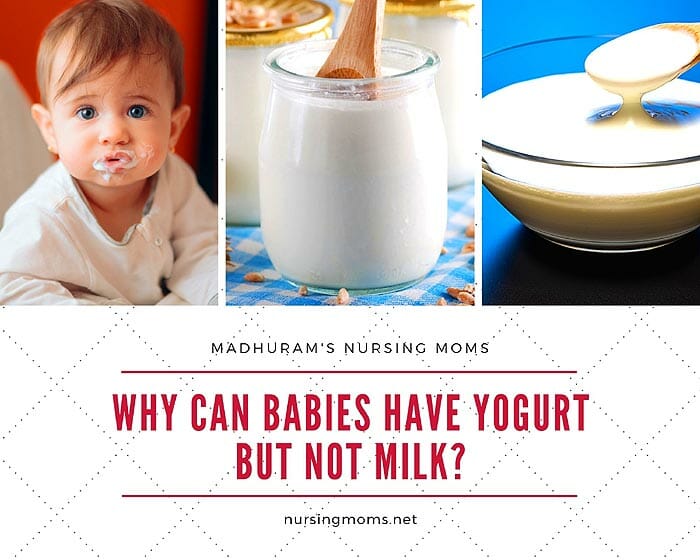
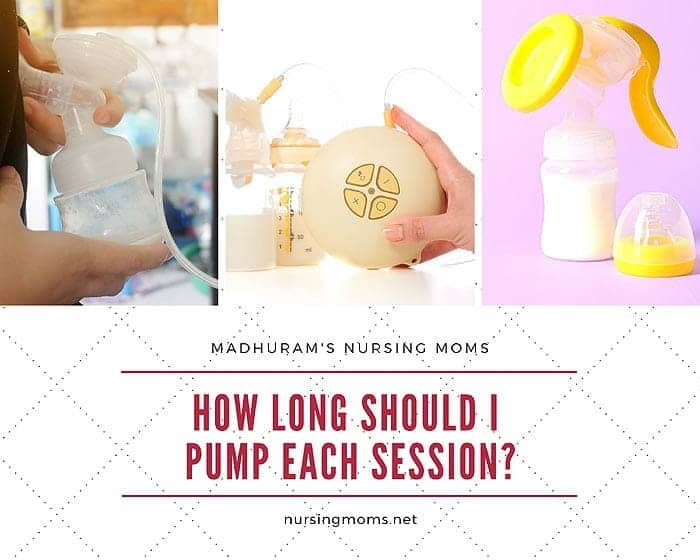
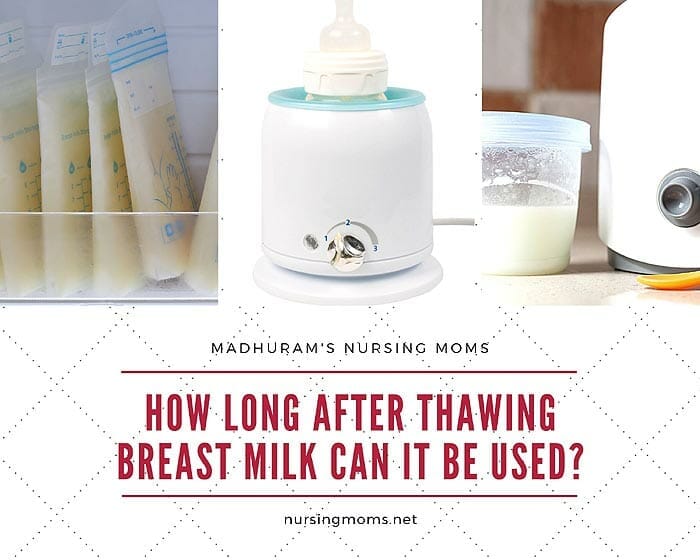
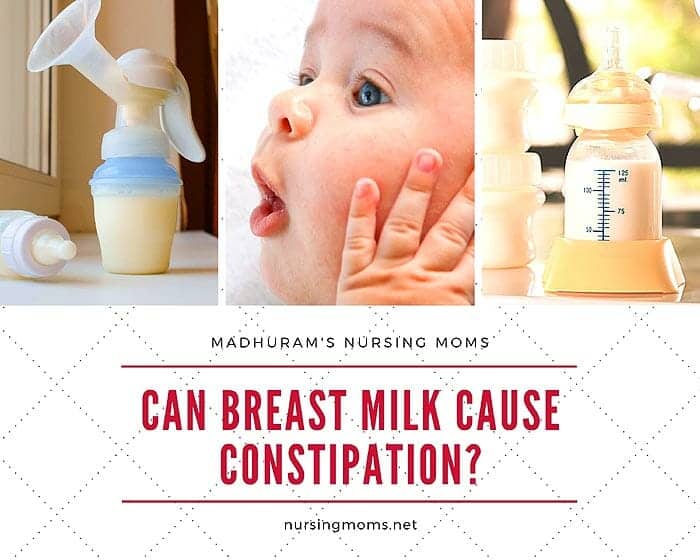


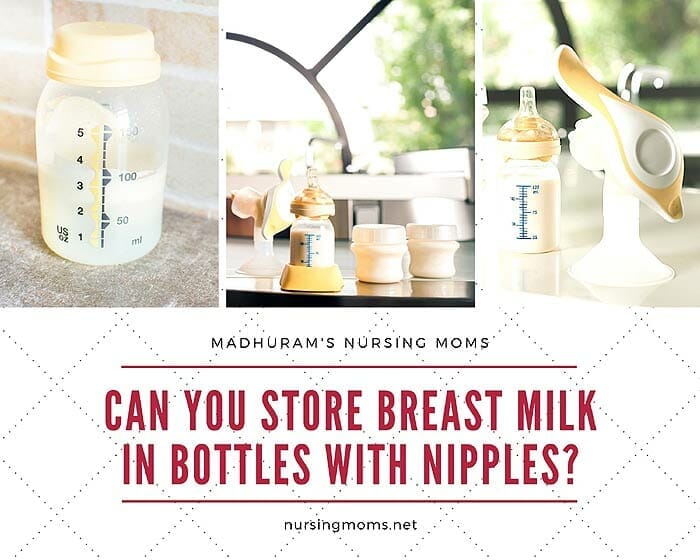

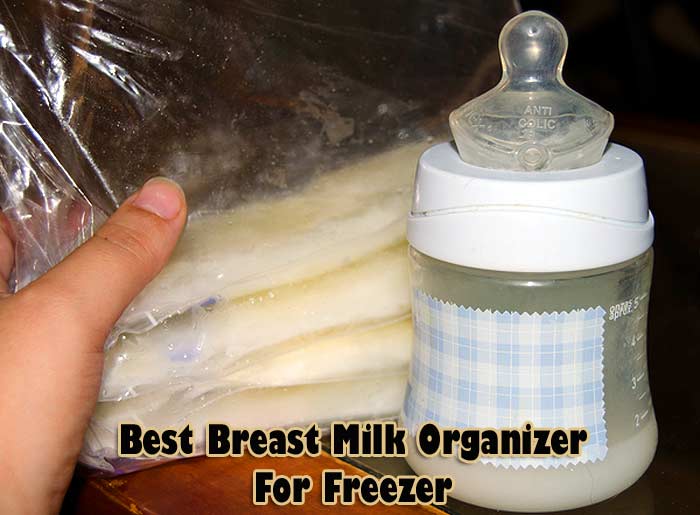

Leave a Reply